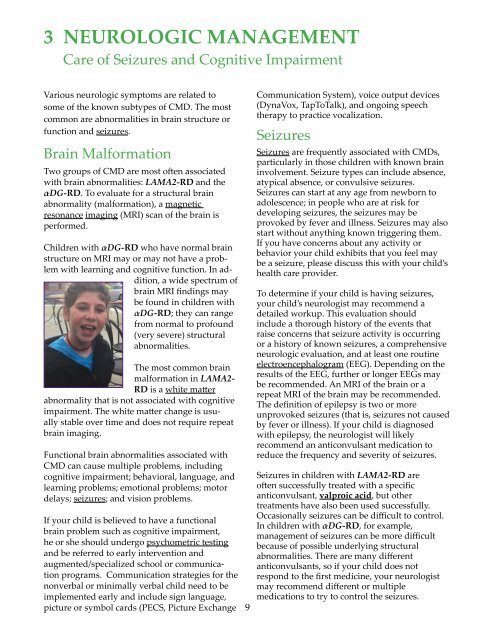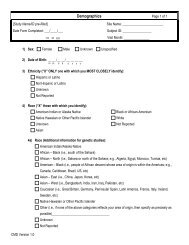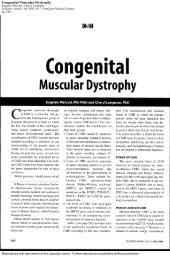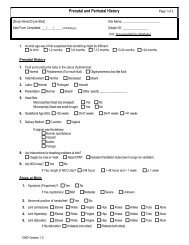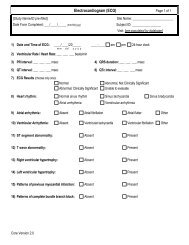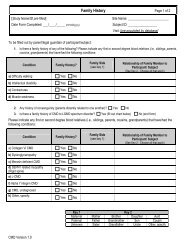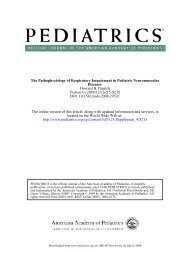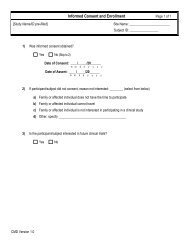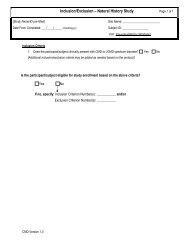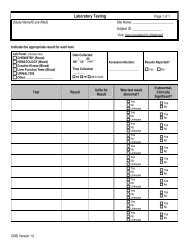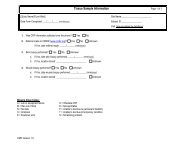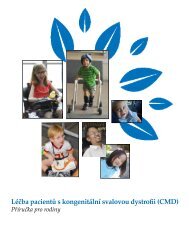The Management of Congenital Muscular Dystrophy ... - Cure CMD
The Management of Congenital Muscular Dystrophy ... - Cure CMD
The Management of Congenital Muscular Dystrophy ... - Cure CMD
You also want an ePaper? Increase the reach of your titles
YUMPU automatically turns print PDFs into web optimized ePapers that Google loves.
3 Neurologic <strong>Management</strong>Care <strong>of</strong> Seizures and Cognitive ImpairmentVarious neurologic symptoms are related tosome <strong>of</strong> the known subtypes <strong>of</strong> <strong>CMD</strong>. <strong>The</strong> mostcommon are abnormalities in brain structure orfunction and seizures.Brain MalformationTwo groups <strong>of</strong> <strong>CMD</strong> are most <strong>of</strong>ten associatedwith brain abnormalities: LAMA2-RD and theαDG-RD. To evaluate for a structural brainabnormality (malformation), a magneticresonance imaging (MRI) scan <strong>of</strong> the brain isperformed.Children with αDG-RD who have normal brainstructure on MRI may or may not have a problemwith learning and cognitive function. In addition,a wide spectrum <strong>of</strong>brain MRI findings maybe found in children withαDG-RD; they can rangefrom normal to pr<strong>of</strong>ound(very severe) structuralabnormalities.<strong>The</strong> most common brainmalformation in LAMA2-RD is a white matterabnormality that is not associated with cognitiveimpairment. <strong>The</strong> white matter change is usuallystable over time and does not require repeatbrain imaging.Functional brain abnormalities associated with<strong>CMD</strong> can cause multiple problems, includingcognitive impairment; behavioral, language, andlearning problems; emotional problems; motordelays; seizures; and vision problems.If your child is believed to have a functionalbrain problem such as cognitive impairment,he or she should undergo psychometric testingand be referred to early intervention andaugmented/specialized school or communicationprograms. Communication strategies for thenonverbal or minimally verbal child need to beimplemented early and include sign language,picture or symbol cards (PECS, Picture Exchange9Communication System), voice output devices(DynaVox, TapToTalk), and ongoing speechtherapy to practice vocalization.SeizuresSeizures are frequently associated with <strong>CMD</strong>s,particularly in those children with known braininvolvement. Seizure types can include absence,atypical absence, or convulsive seizures.Seizures can start at any age from newborn toadolescence; in people who are at risk fordeveloping seizures, the seizures may beprovoked by fever and illness. Seizures may alsostart without anything known triggering them.If you have concerns about any activity orbehavior your child exhibits that you feel maybe a seizure, please discuss this with your child’shealth care provider.To determine if your child is having seizures,your child’s neurologist may recommend adetailed workup. This evaluation shouldinclude a thorough history <strong>of</strong> the events thatraise concerns that seizure activity is occurringor a history <strong>of</strong> known seizures, a comprehensiveneurologic evaluation, and at least one routineelectroencephalogram (EEG). Depending on theresults <strong>of</strong> the EEG, further or longer EEGs maybe recommended. An MRI <strong>of</strong> the brain or arepeat MRI <strong>of</strong> the brain may be recommended.<strong>The</strong> definition <strong>of</strong> epilepsy is two or moreunprovoked seizures (that is, seizures not causedby fever or illness). If your child is diagnosedwith epilepsy, the neurologist will likelyrecommend an anticonvulsant medication toreduce the frequency and severity <strong>of</strong> seizures.Seizures in children with LAMA2-RD are<strong>of</strong>ten successfully treated with a specificanticonvulsant, valproic acid, but othertreatments have also been used successfully.Occasionally seizures can be difficult to control.In children with αDG-RD, for example,management <strong>of</strong> seizures can be more difficultbecause <strong>of</strong> possible underlying structuralabnormalities. <strong>The</strong>re are many differentanticonvulsants, so if your child does notrespond to the first medicine, your neurologistmay recommend different or multiplemedications to try to control the seizures.


